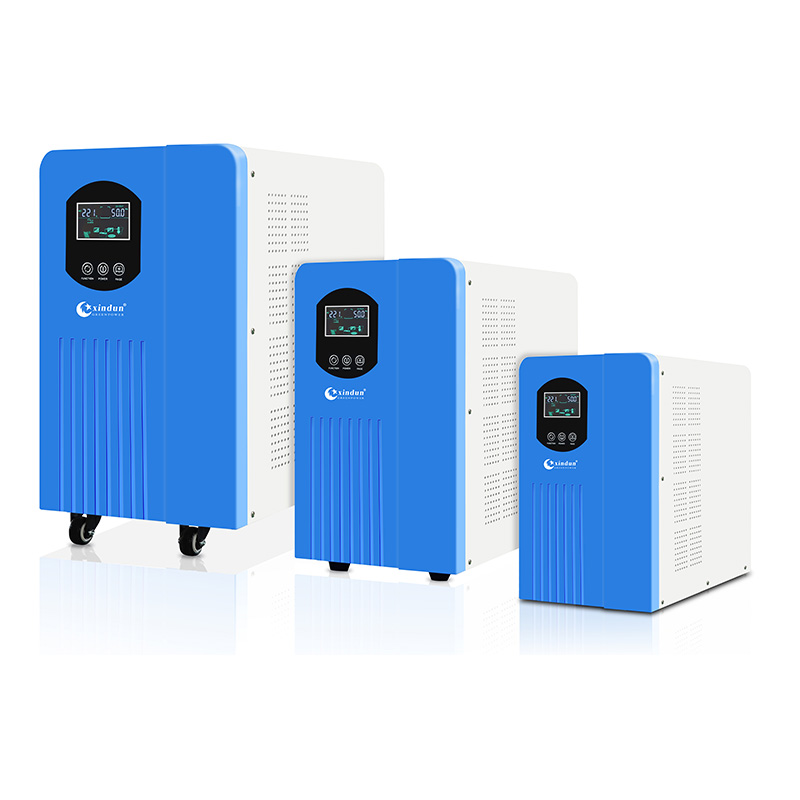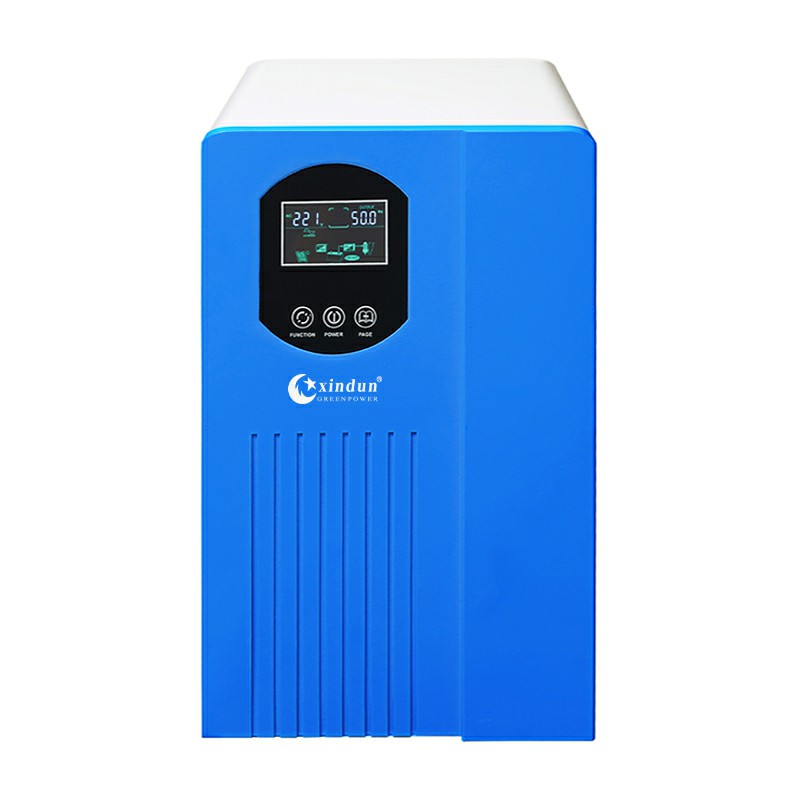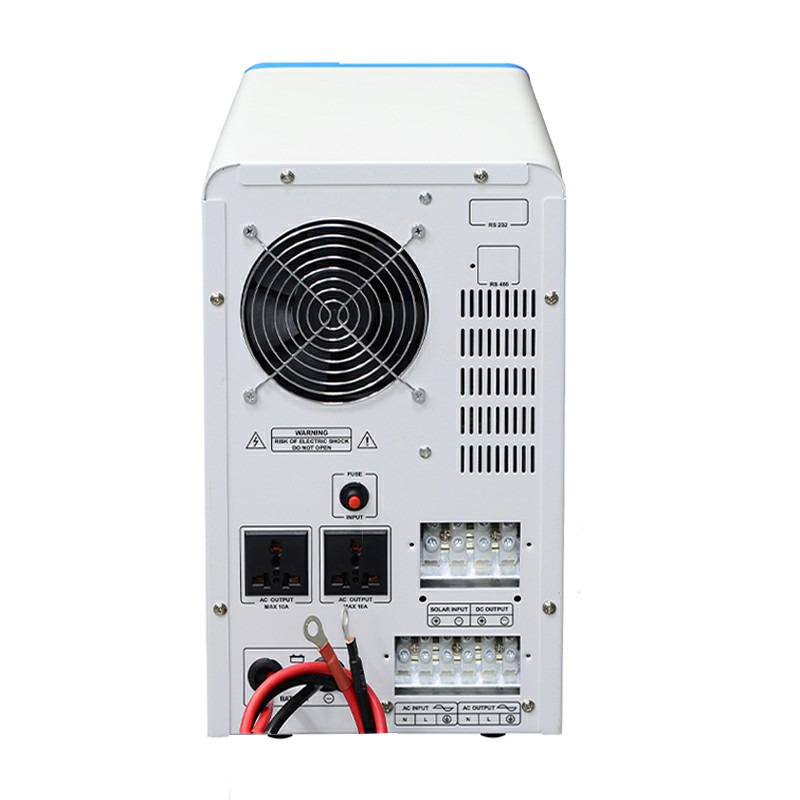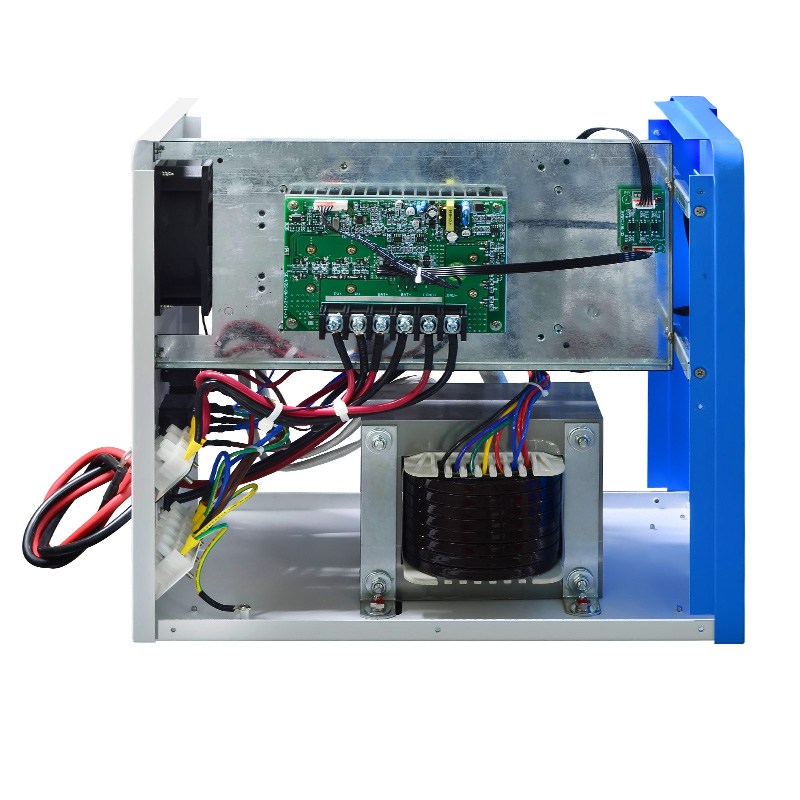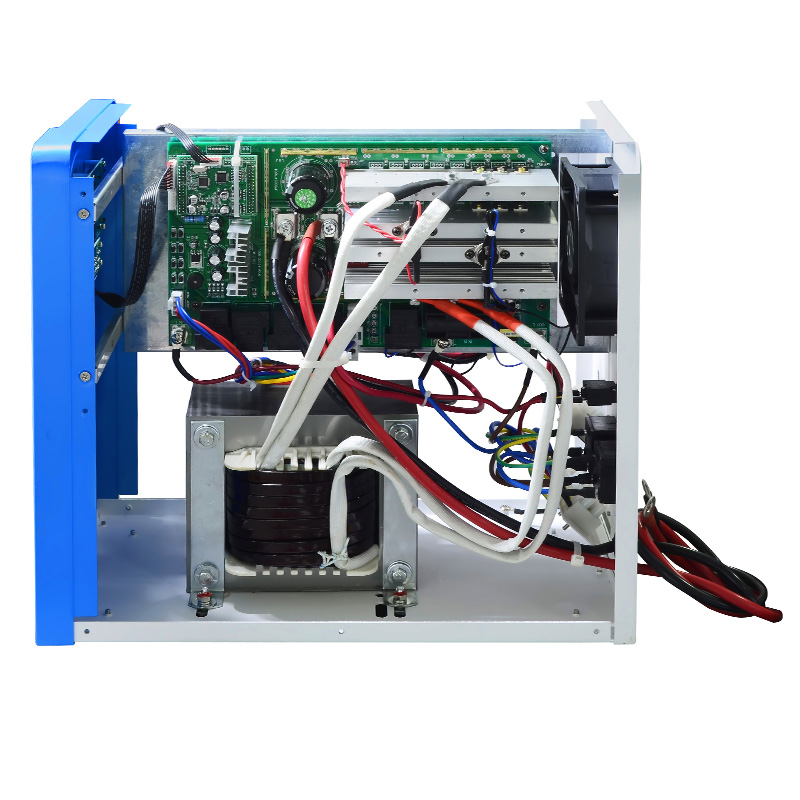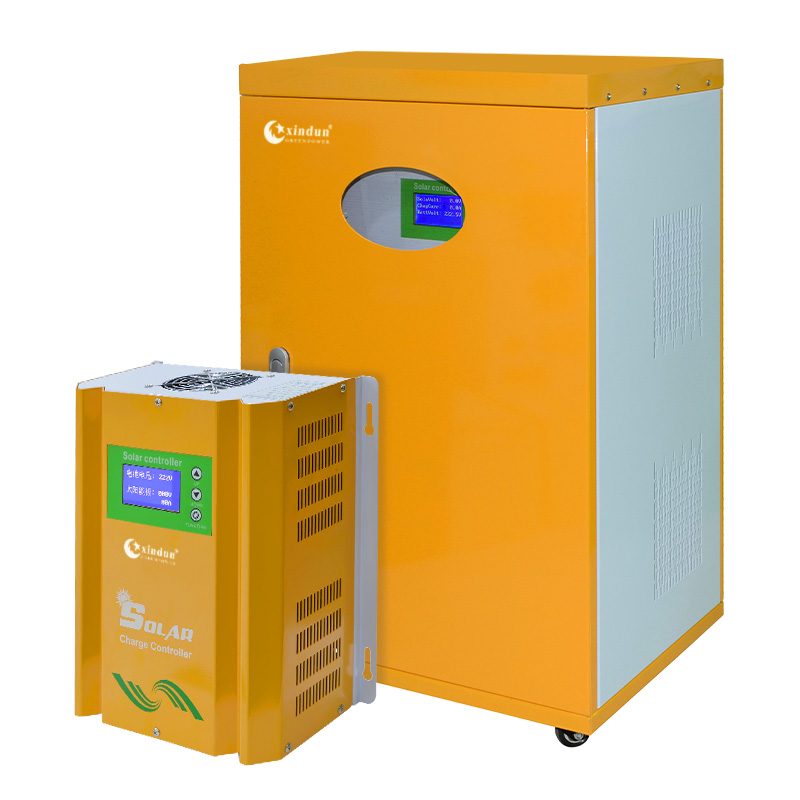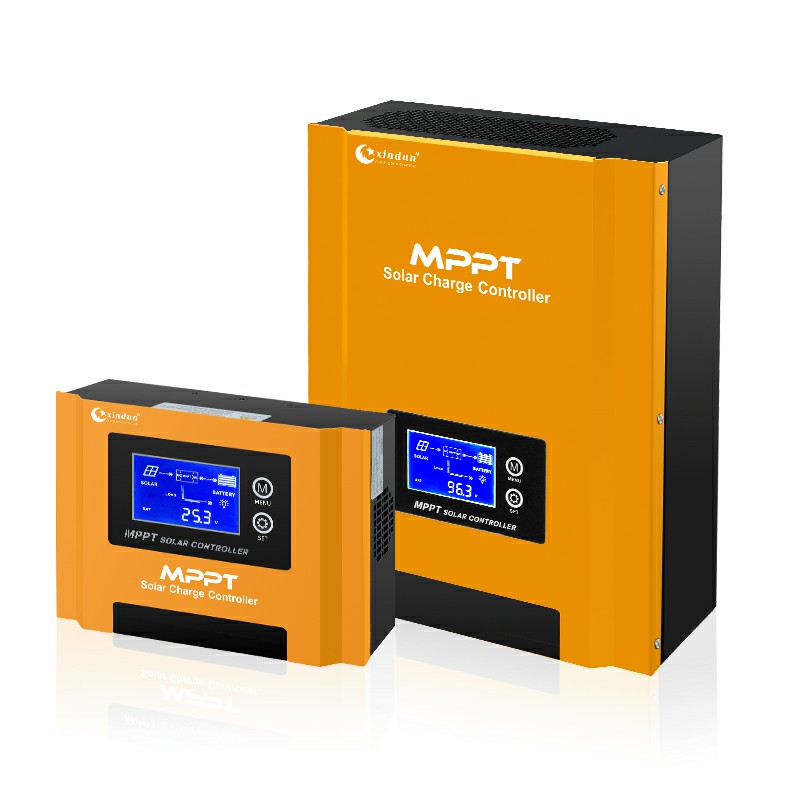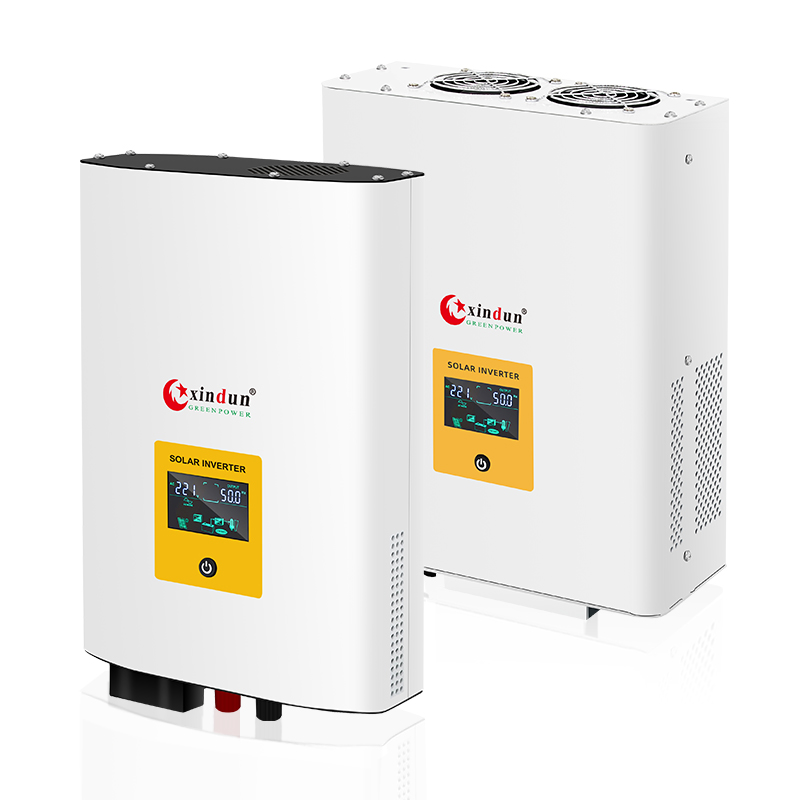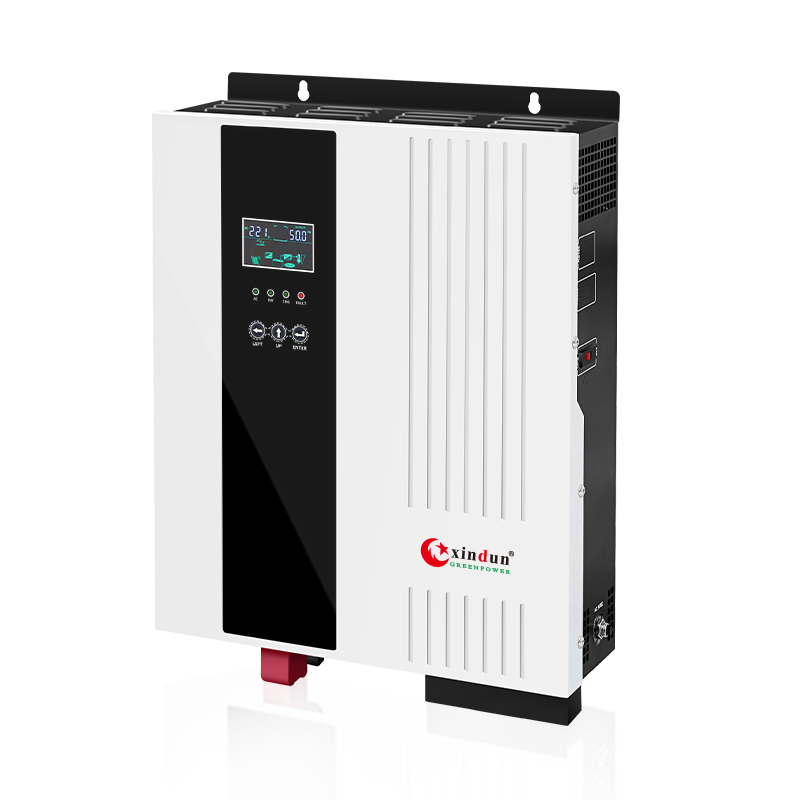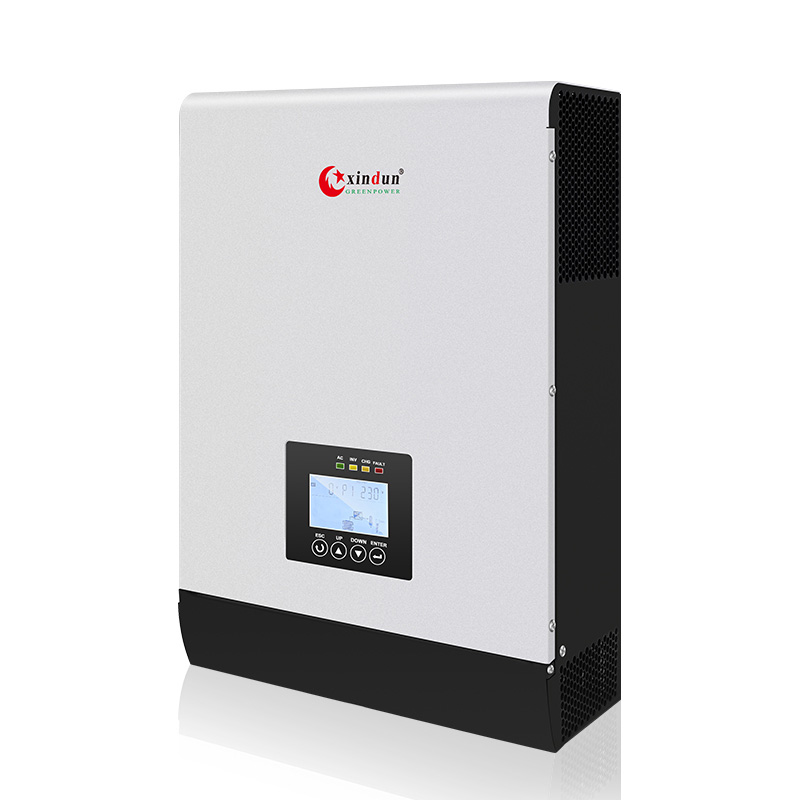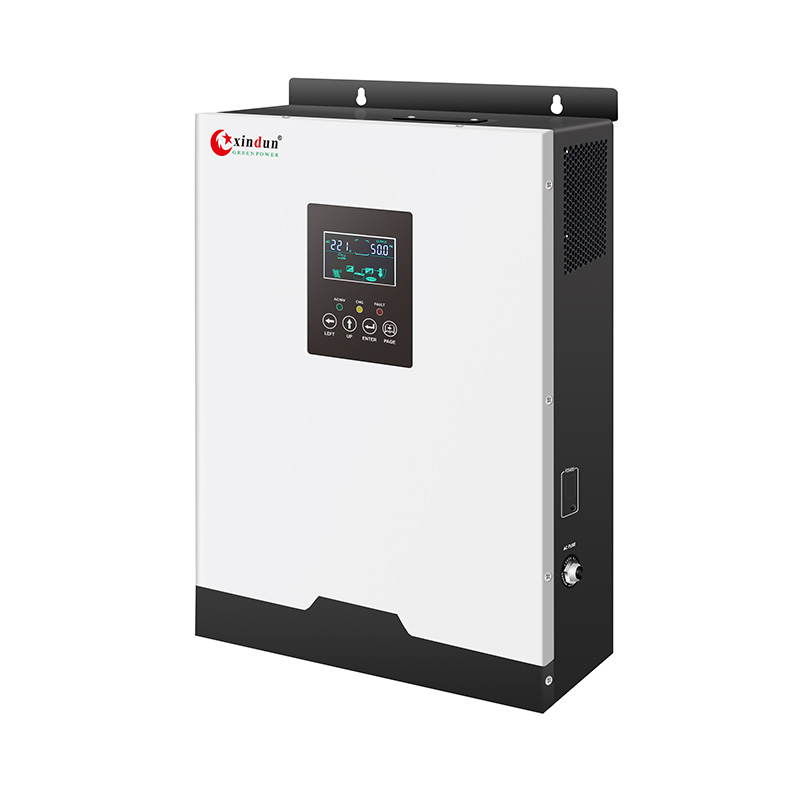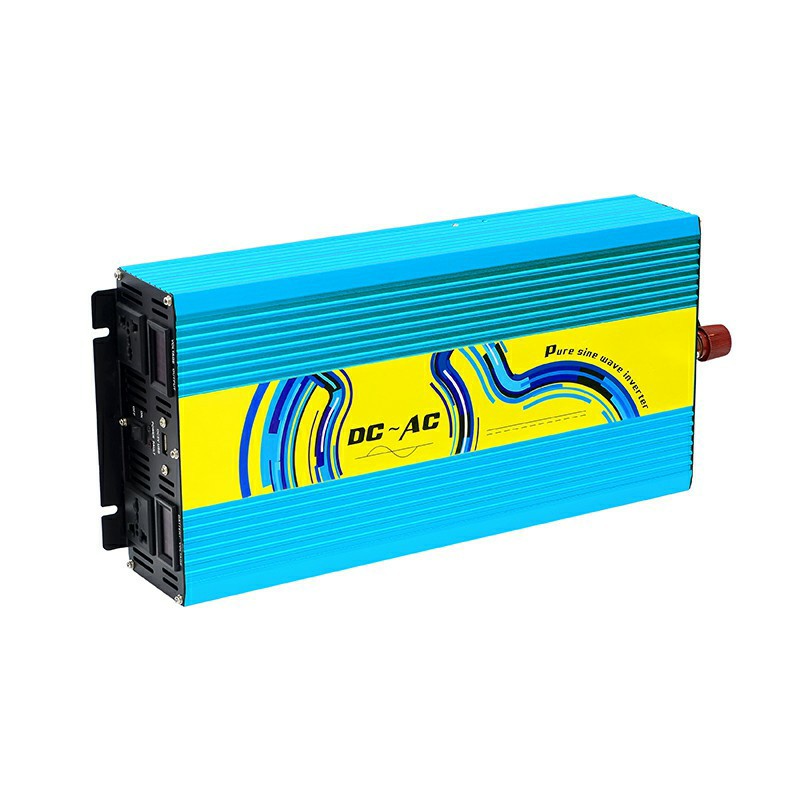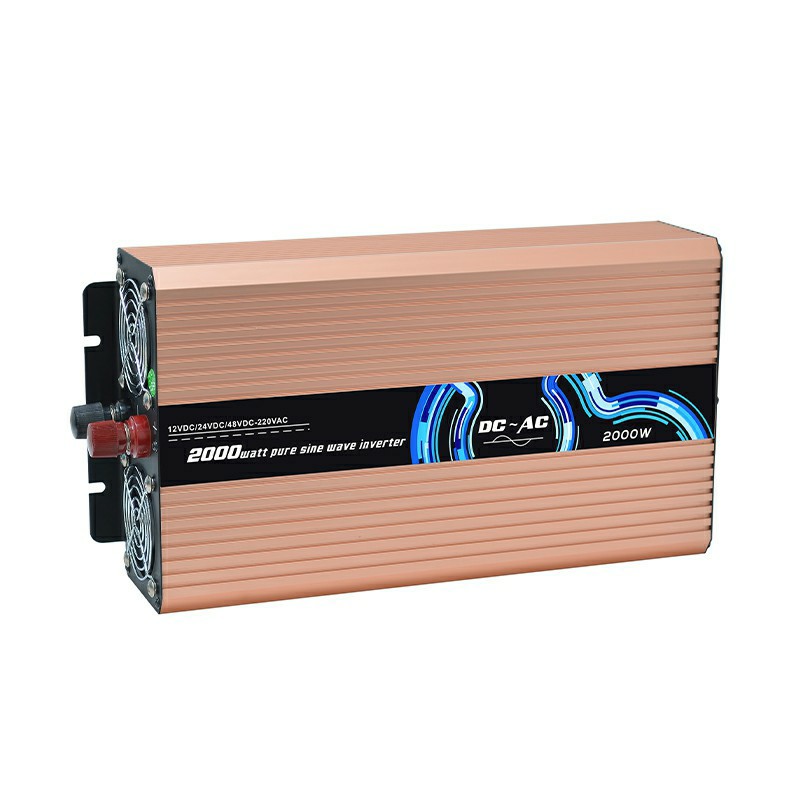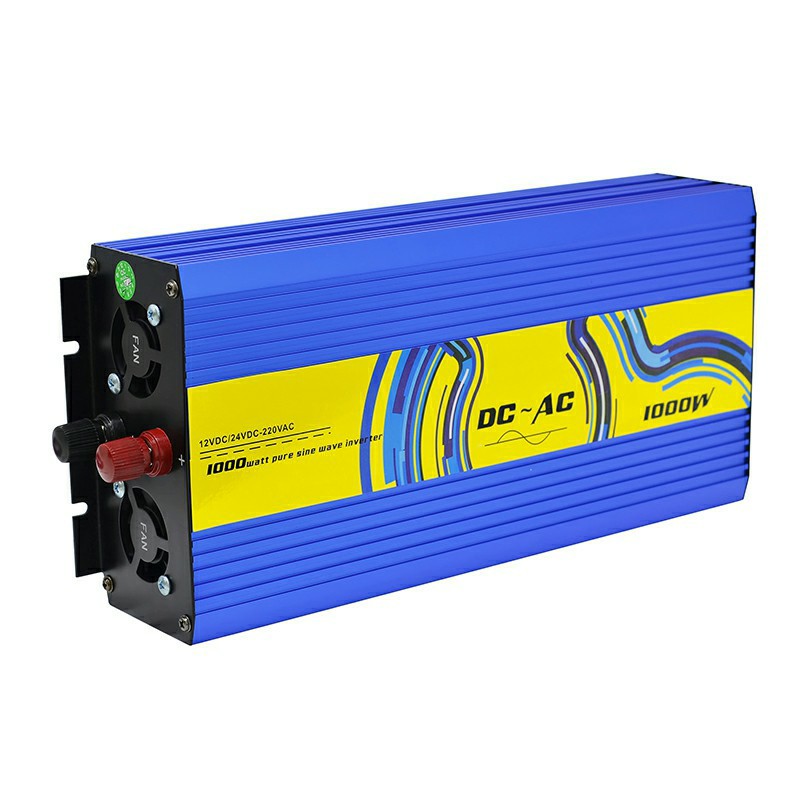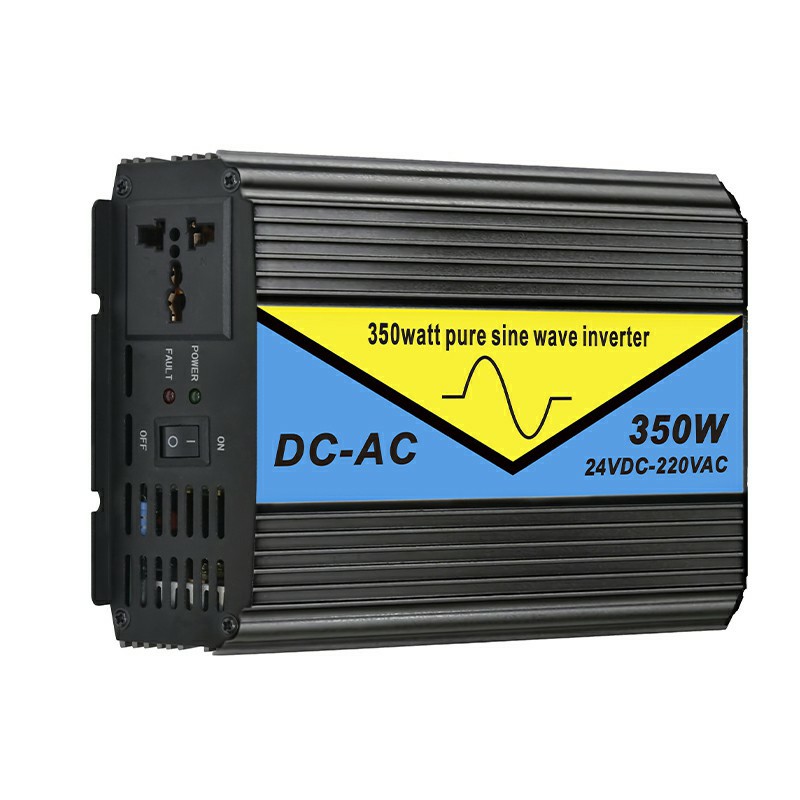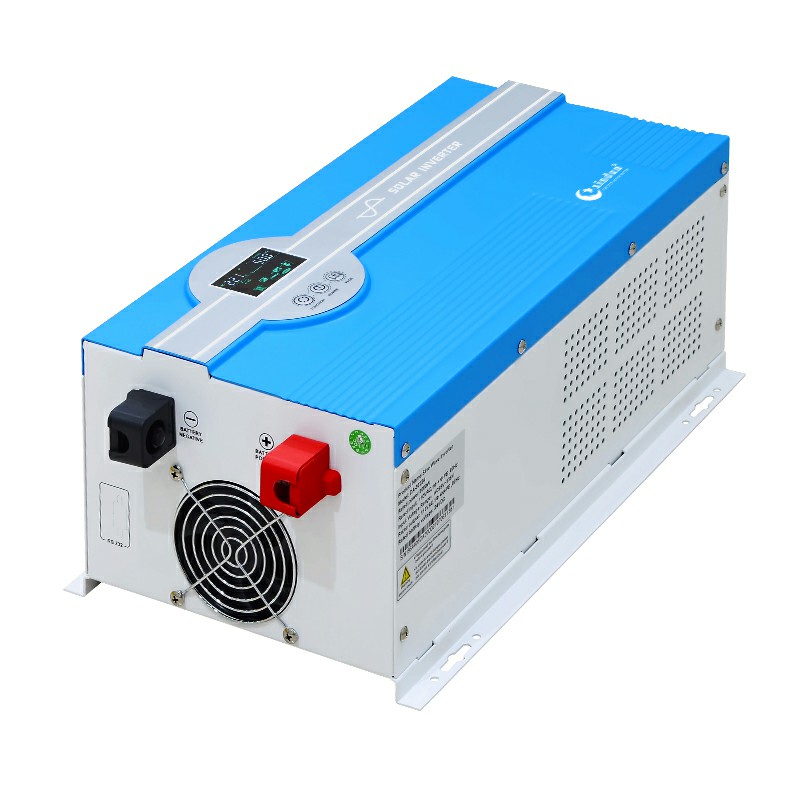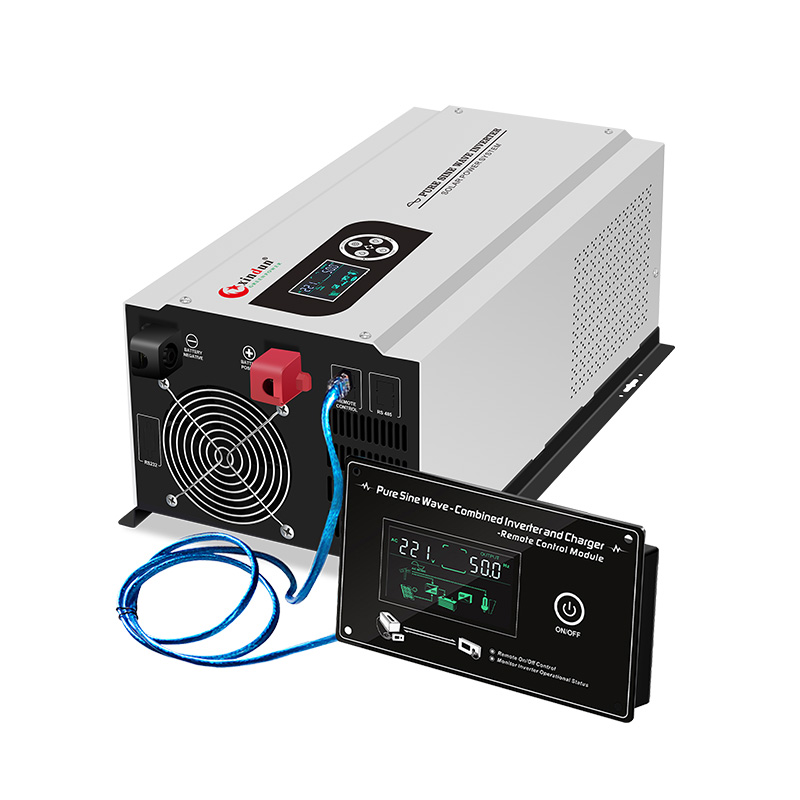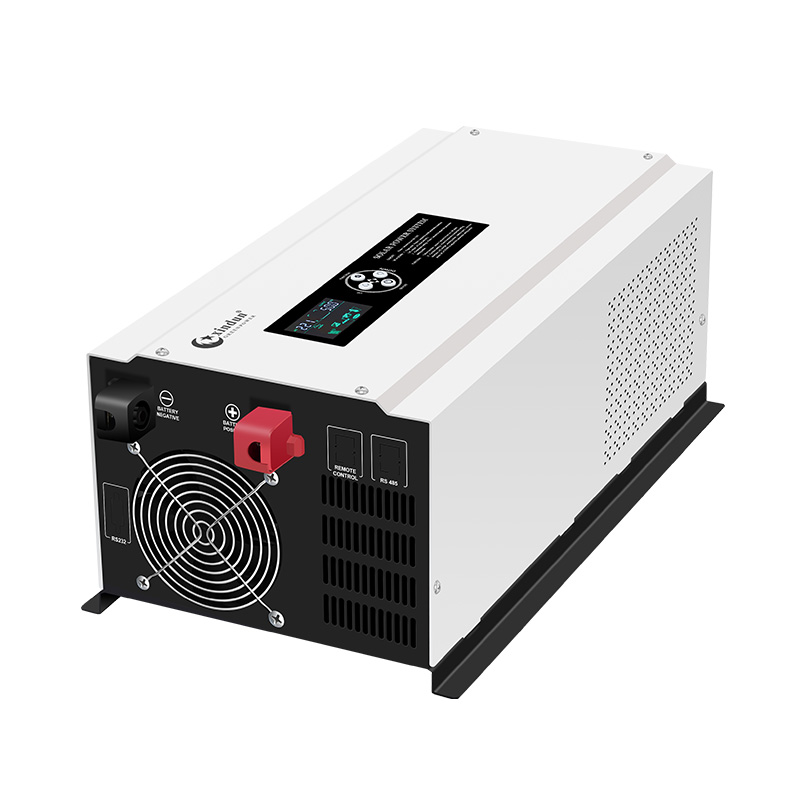
# Benefits Of Best Low Frequency Inverter 24V 48V
◇ AC charging current 0~20A adjustable, more flexible user battery capacity configuration;
◆ Pure sine wave best low frequency inverter adopts EI transformer, strong impact resistance ability;
◇ LCD integrated display, real-time view of operating status and setting data;
◆ Best low frequency inverter 24v 48v with 3 type working modes (AC first / Battery first / Saving energy mode);
◇Adding fault code interrogate function, easy for real-time operating status monitoring;
◆ Protection against overload, overheat, short circuits, safety and reliable;
◇ Best low frequency inverter supports diesel or gasoline generator, adapt any tough electricity occasions.
# Best Low Frequency Inverter 48V 24V Details

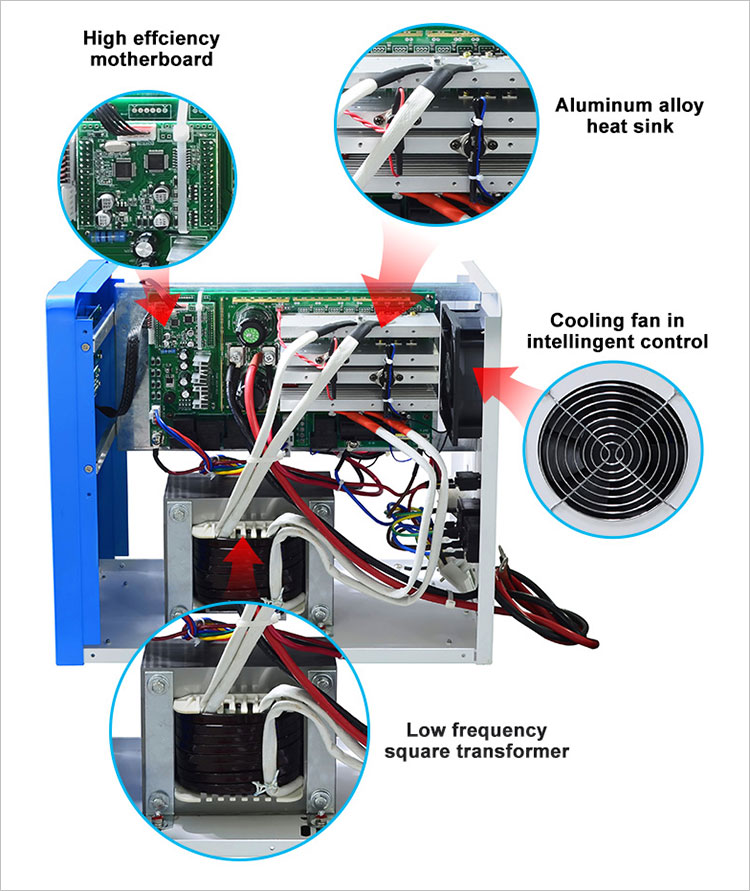
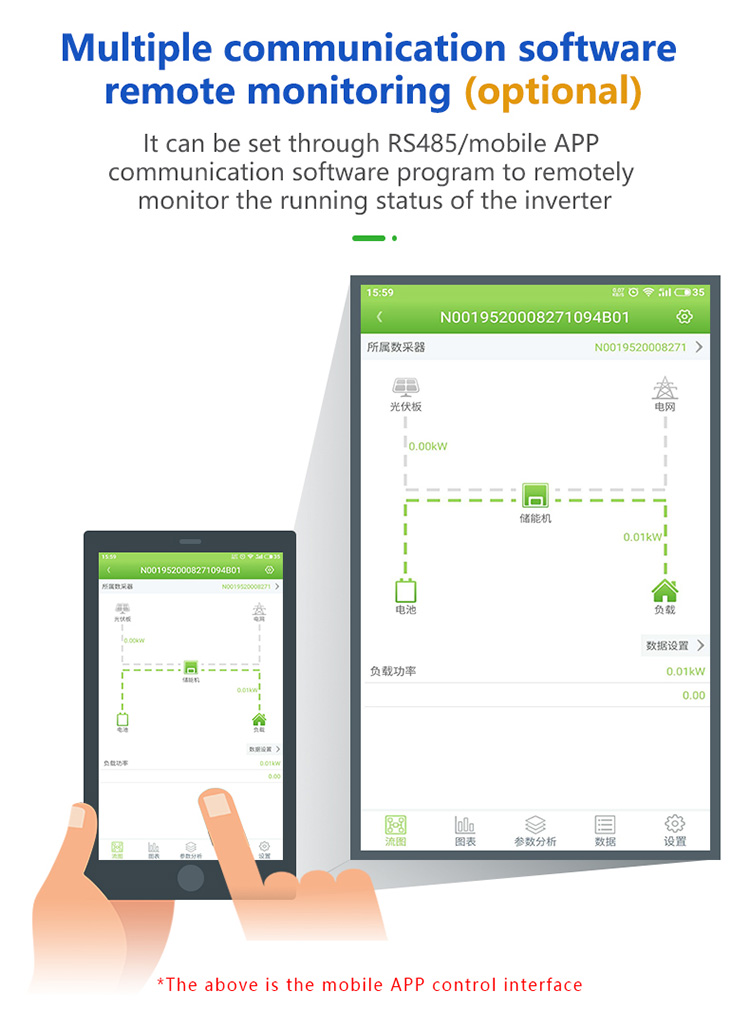
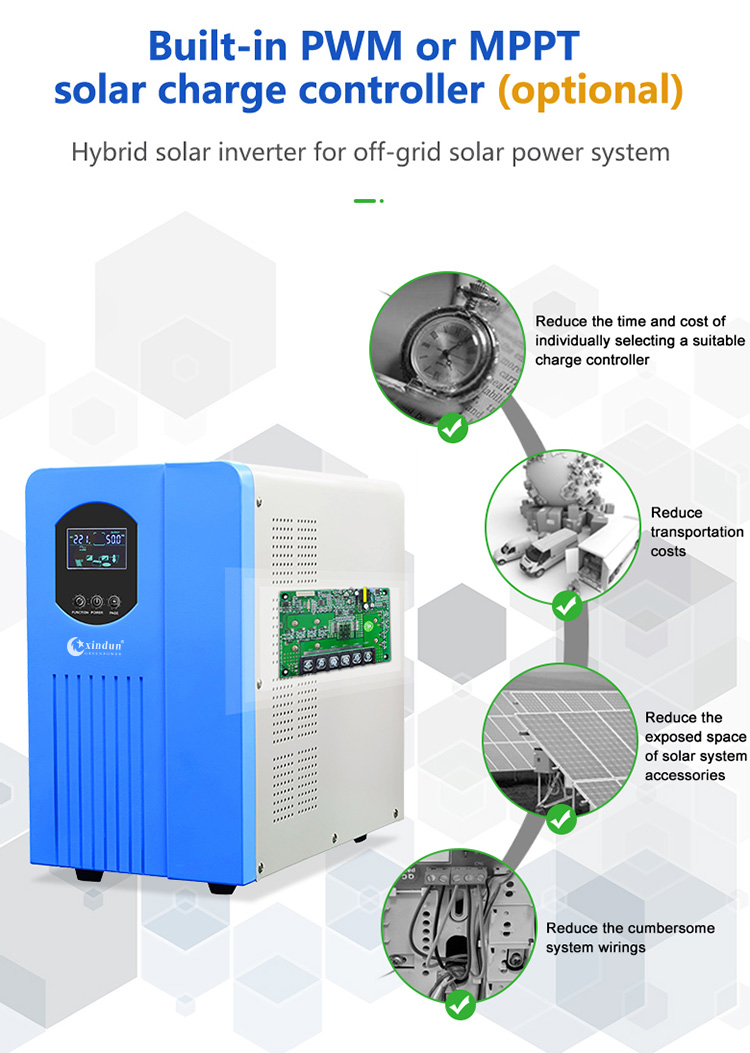
In the off-grid solar system of the best low frequency inverter 24V 48V, the solar charging controller stores the electric energy generated by the converted photovoltaic module in the battery. In addition, it also has the function of protecting the battery and preventing the battery from overcharging. At present, there are two main technical routes of solar charging controller: maximum power point tracking (MPPT) and pulse width modulation (PWM). Both have their advantages and disadvantages, so users can choose according to different situations.
1) MPPT solar controller:
In the off-grid solar system of the best low frequency inverter 48V 24V, as the second generation solar controller, MPPT charging controller has more inductors and power diodes than PWM charging controller, so it has more powerful functions.
On the one hand, it has the function of maximum power point tracking. During battery charging, the solar module can output maximum power unless the battery reaches saturation. On the other hand, the voltage range of PV module is wide. With power switch, inductor and circuit in the controller, the voltage of the module is 1.2-3.5 times of the battery voltage. For example, for a 24V battery, when the input voltage of the module is between 30V and 80V, each series can be equipped with one or two modules, while for a 48V battery, if the input voltage of the module is between 60V and 110V, two or two modules can be used in series. Each series can be equipped with three modules.
2) PWM solar controller:
In the early stage, In the off-grid solar system of the best low frequency inverter 24V 48V, all solar controllers are PWM. The solar controller has a simple structure and is composed of the main switch and capacitor of the power supply, as well as the driving and protection circuits. The output voltage can be controlled by the PWM duty cycle of the switch.
The PWM solar charging controller has only one switch for connecting the solar array and the battery panel. As the battery is gradually fully charged and the battery voltage is increased, the PWM solar charging controller will gradually reduce the power supplied to the battery. When the PV output is different, the maximum power output shall prevail. In addition, the PWM controller has the same charging and discharging management functions as the battery, which can prevent the battery from overcharging and discharging.
Since the PWM charging controller has only one switch to connect the solar module and the battery, and there is no inductor or other voltage divider between them, the voltage of the module is about 1.2-2.0 times of the battery voltage. For example, for a 24V battery, the input voltage of the module is between 30V and 50V, and each series can only be equipped with one module. For a 48V battery, if the input voltage of the module is between 60V and 80V, only two each series can be equipped with modules.
# Best Low Frequency Inverter 48V 24V Wiring Diagram
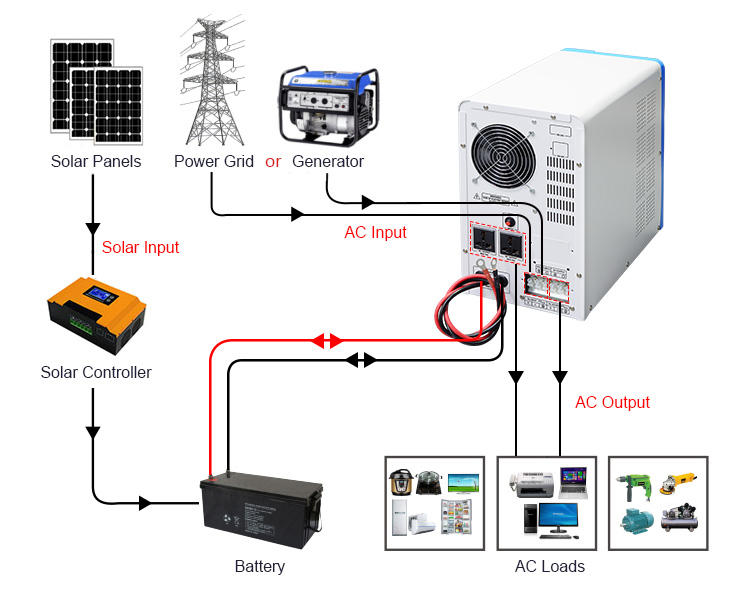
# Best Low Frequency Inverter 24V 48V Application
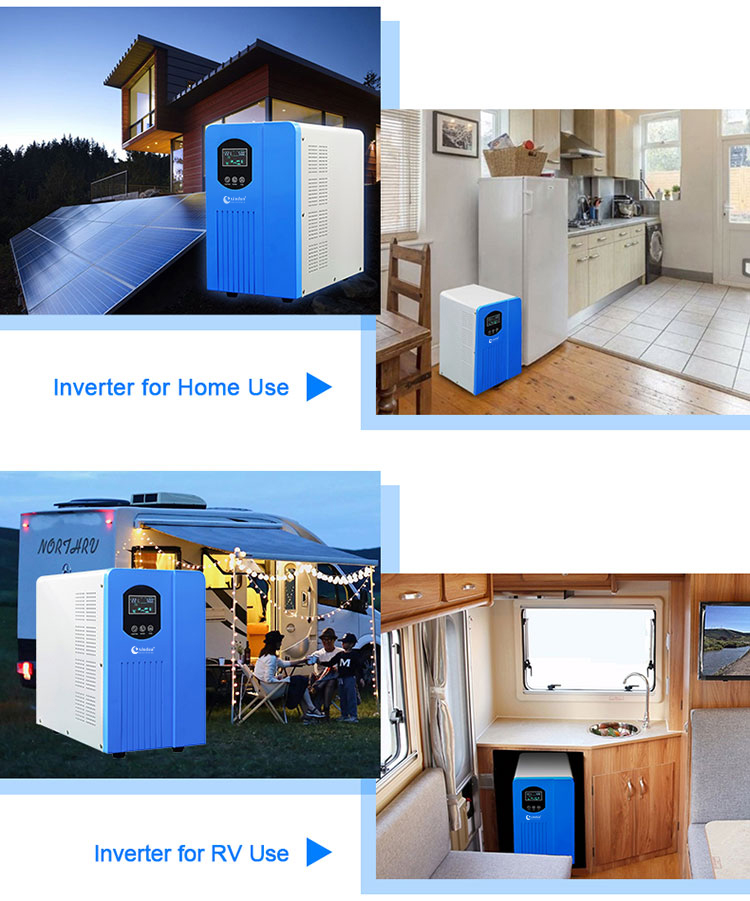
# Best Low Frequency Inverter 48V 24V Package and Delivery
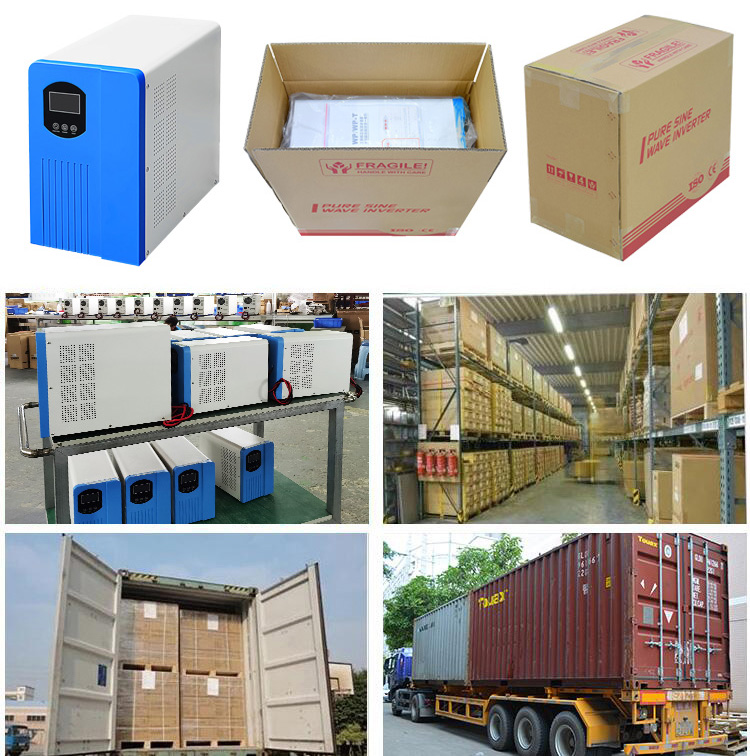
# Best Low Frequency Inverter Specification
| Specification |
| Model WP/WP-T | 70112/24 | 10212/24 | 15224/48 | 20224/48 | 30224/48 | 35248/96 | 40248/96 | 50248/96 | 60248/96 |
| Rated Power | 700W | 1000W | 1500W | 2000W | 3000W | 3500W | 4000W | 5000W | 6000W |
| Peak Power(20ms) | 2100VA | 3000VA | 4500VA | 6000VA | 9000VA | 10500VA | 12000VA | 15000VA | 18000VA |
| Start Motor | 0.5HP | 1HP | 1.5HP | 2HP | 3HP | 3HP | 3HP | 4HP | 4HP |
| Battery Voltage | 12/24VDC | 12/24VDC | 24/48VDC | 24/48VDC | 24/48VDC | 48/96VDC | 48/96VDC | 48/96VDC | 48/96VDC |
| Max AC charging current | 0A~20A(Depending on the model,The maximum charging power is 1/4 of the rated power) |
| Built-in solar controller charging current (optional) | 10A~60A(PWM or MPPT) | 24/48V(PWM:10A~60A/MPPT:10A~100A) | 48V(PWM:10A~120A/MPPT:10A~100A) /
96V(50A/100A(PWM or MPPT) |
| Size(L*W*Hmm) | 345*170*290 | 410*225*390 | 490*260*500 |
| Packing Size(L*W*Hmm) | 410x235x345(1pc)/490x425x358mm(2pcs) | 473*288*445 | 550*320*560 |
| N.W.(kg) | 10(1pc) | 12.5(1pc) | 15(1pc) | 23 | 28 | 32 | 45 | 48 | 50 |
| G.W.(kg) | 12(1pc) | 14.5(1pc) | 17(1pc) | 26 | 31 | 35 | 49 | 52 | 54 |
| Installation Method | Tower |
| Parameter |
| Input | DC Input Voltage Range | 10.5-15VDC(Single battery voltage) |
| AC Input Voltage Range | 73VAC~138VAC(110VAC) / 83VAC~148VAC(120VAC) / 145VAC~275VAC(220VAC) / 155VAC~285VAC(230VAC) / 165VAC~295VAC( 240VAC) |
AC Input Frequency Range | 45Hz~55Hz(50Hz) / 55Hz~65Hz(60Hz) |
| AC charging method | Three-stage (constant current, constant voltage, floating charge) |
| Output | Efficiency(Battery Mode) | ≥85% |
| Output Voltage(Battery Mode) | 110VAC±2% / 120VAC±2% / 220VAC±2% / 230VAC±2% / 240VAC±2% |
| Output Frequency(Battery Mode) | 50Hz±0.5 or 60Hz±0.5 |
| Output Wave(Battery Mode) | Pure Sine Wave |
| Efficiency(AC Mode) | >99% |
| Output Voltage(AC Mode) | 110VAC±10% / 120VAC±10% / 220VAC±10% / 230VAC±10% / 240VAC±10% |
| Output Frequency(AC Mode) | Follow input |
Output waveform distortion(Battery Mode) | ≤3%(Linear load) |
| No load loss(Battery Mode) | ≤2.5% rated power |
| No load loss(AC Mode) | ≤2% rated power( charger does not work in AC mode) |
No load loss (Energy saving Mode) | ≤10W |
Battery Type | VRLA Battery | Charge Voltage :14.2V; Float Voltage:13.8V(Single battery voltage) |
| Customize battery | Charging and discharging parameters of different types of batteries can be customized according to user requirements
(charging and discharging parameters of different types of batteries can be set through the operation panel) |
Protection | Battery undervoltage alarm | Factory default: 11V(Single battery voltage) |
| Battery undervoltage protection | Factory default: 10.5V(Single battery voltage) |
| Battery overvoltage alarm | Factory default: 15V(Single battery voltage) |
| Battery overvoltage protection | Factory default: 17V(Single battery voltage) |
| Battery overvoltage recovery voltage | Factory default: 14.5V(Single battery voltage) |
| Overload power protection | Automatic protection (battery mode), circuit breaker or insurance (AC mode) |
| Inverter output short circuit protection | Automatic protection (battery mode), circuit breaker or insurance (AC mode) |
| Temperature protection | >90°C(Shut down output) |
Alarm | A | Normal working condition, buzzer has no alarm sound |
| B | Buzzer sounds 4 times per second when battery failure, voltage abnormality, overload protection |
| C | When the machine is turned on for the first time, the buzzer will prompt 5 when the machine is normal |
Inside Solar controller (Optional) | Charging Mode | PWM or MPPT |
| PV Input Voltage Range | PWM: 15V-44V(12V system); 30V-44V(24V system); 60V-88V(48V system); 120V-176V(96V system)
MPPT: 15V-120V(12V system); 30V-120V(24V system); 60V-120V(48V system); 120V-240V(96V system) |
Max PV Input Voltage(Voc) (At the lowest temperature) | PWM: 50V(12V/24V system); 100V(48V system); 200V(96V system) / MPPT: 150V(12V/24V/48V system) |
PV Array Maximum Power | 12V system: 140W(10A)/280W(20A)/420W(30A)/560W(40A)/700W(50A)/840W(60A)/1120W(80A)/1400W(100A); 24V system: 280W(10A)/560W(20A)/840W(30A)/1120W(40A)/1400W(50A)/1680W(60A)/2240W(80A)/2800W(100A); 48V system : 560W(10A)/1120W(20A)/1680W(30A)/2240W(40A)/2800W(50A)/3360W(60A)/4480W(80A)/5600W(100A)/6720W(PWM 120A)/5.6KW&11.2KW(MPPT 100A/200A); 96V system: 5.6KW(50A)/11.2KW(100A) |
| Standby loss | ≤3W |
| Maximum conversion efficiency | >95% |
| Working Mode | Battery First/AC First/Saving Energy Mode |
| Transfer Time | ≤4ms |
| Display | LCD |
| Thermal method | Cooling fan in intelligent control |
| Communication(Optional) | RS485/APP(WIFI monitoring or GPRS monitoring) |
| Environment | Operating temperature | '-10℃~40℃ |
| Storage temperature | '-15℃~60℃ |
| Noise | ≤55dB |
| Elevation | 2000m(More than derating) |
| Humidity | 0%~95% ,No condensation |
| Note: All specifications are subject to charge without prior notice
|
# Why Choose Us?
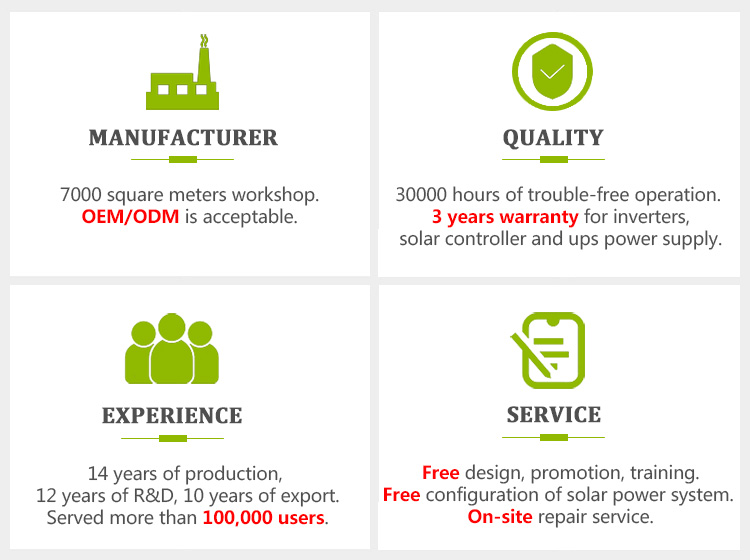
▷R&D Ability
Xindun have 20+ senior engineer and is at the top of the industry.ISO 9001:2015,ISO 14001:2015,10+ Software Copyright,20+ Patent Certificates, 50+ Honorary Certificates.
▷OEM/ODM
We can provide customized services: logo, machine appearance,special voltage and power, etc. The products you see on other website which is same with us, they are all from Xindun Power.
▷Warranty
The warranty of Xindun products is 2~3 years(Industry-wide warranty is 1 year).
▷After-Sales Service
Xindun's product failure rate is within 5%, which is far lower than the average in the industry. We promise to solve the after-sales problems within 48 hours.We have cooperated with many customers for more than 10 years,without perfect after-sales service, they cannot always choose xindun!
# About Xindun Power
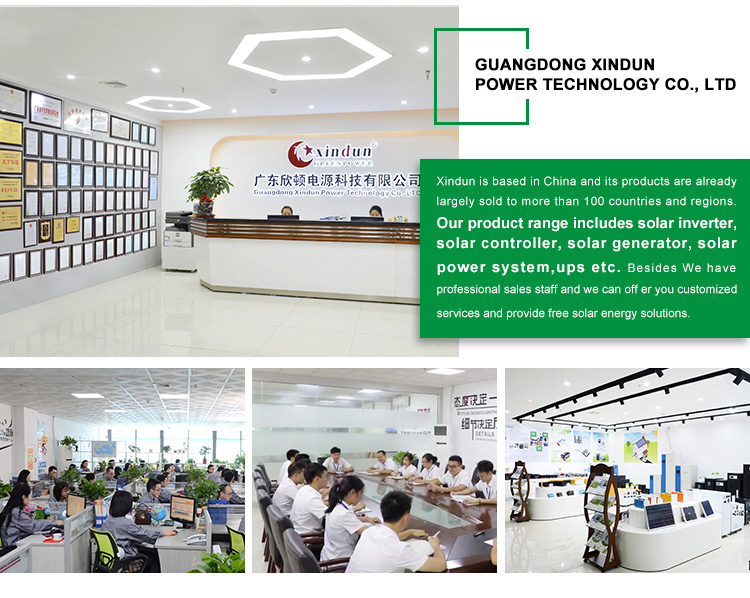
Guangdong Xindun Power Technology Co.,Ltd-Takes innovation as the core, grasps the leading photovoltaic power generation technology, and joins the advanced industrial Internet of things and big data technology to realize the successful application of cloud computing in the field of energy management. In the industry for more than 15 years of outstanding performance, let us become a strong influence in the field of companies.
★Factory Location-Foshan,Guangdong,China
★Main Market-Africa, Middle East, Asia & South America. (Ukraine, Russia, Vietnam, Pakistan, Nigeria, Kenya, South Afriac, Ghana, Thailand,Philippines, etc.)
★Factory-7000+Square Meters, 100+ workers
★Product Range-solar inverter,3 phase inverter,hybrid inverter,UPS,solar charge controller,solar power system,mini solar dc system
★Department-R&D, Production, Sales, Marketing, Purchasing, QA, After-sale service department
★Certificate-ISO 14001:2015, CE, IEC, TUV etc.
★Patent-Software Paten, Design Patent, Project Pantent
# Qualifications and Certificates
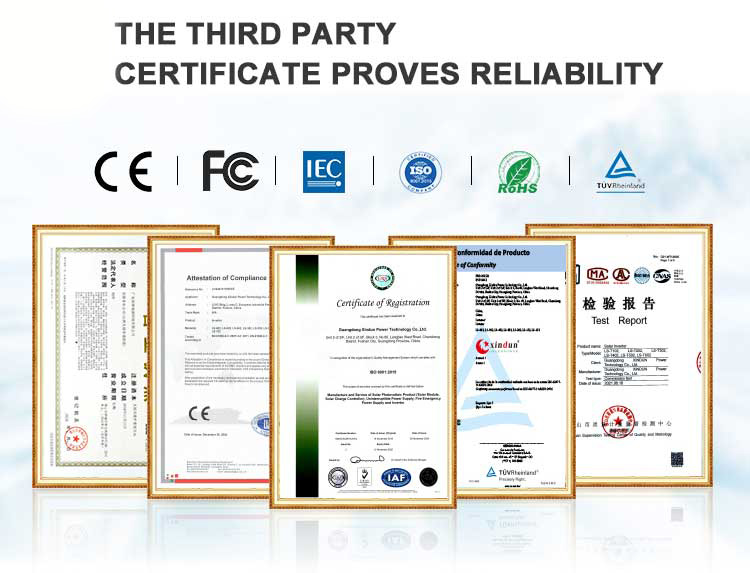
# Factory Workshop
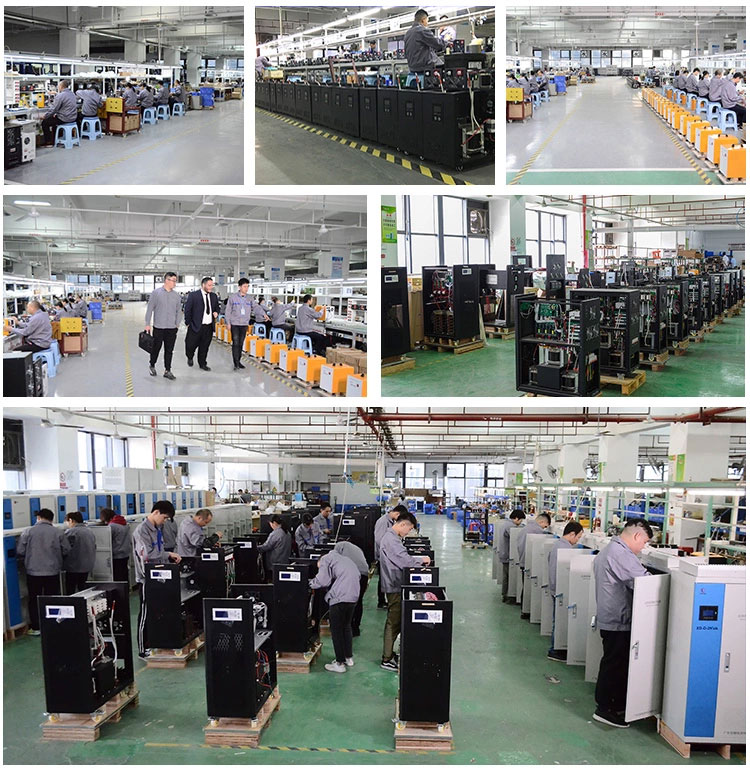
We have nearly 8,000 square meters of standard solar inverter production factory, advanced R&D testing capabilities and hybrid solar inverter production equipment.Strict quality inspection and manufacturing process control.

# Our Respected Global Customers

# Frequently Asked Questions
Q1:What are the characteristics of the best low frequency inverter?
A1:The iron loss of the best low frequency inverter is basically unchanged when operating at full load and light load, so the no-load loss of the best low frequency inverter is relatively large when operating at light load. Moreover, the best low frequency inverter has better load capacity, especially the impact load capacity, than the high-frequency inverter, and can suppress the higher harmonic components in the waveform.
Q2:Why we choose the best low frequency inverter?
A2:The best low frequency inverter has the advantages of simple circuit, easy adjustment, strong overload resistance, low cost and practicality, and is popular in the market.
Q3:Which is better, low frequency inverter 24v or low frequency inverter 48v?
A3:The selection shall be based on the voltage, battery capacity, electrical power and other conditions of the product. The power and time of the low frequency inverter operation depends on the ampere-hour of the battery. The low frequency inverter 24V to 110V/220V is generally used for medium and small power inverters, and the load power is recommended to be 500w-3000w; The low frequency inverter 48V to 110V/220V is generally used for high-power inverters, and the load power is recommended to be 2000w-6000w.
Q4:Are we the factory and manufacturer of the best low frequency inverter?
A4:Yes, Xindun Power has more than 16 years of experience in the production and design of the best low frequency inverter. We have professional inverter engineers to provide configuration and installation services and after-sales maintenance and other technical services.
Q5:What are our inverter sales markets?
A5:The inverters and solar energy systems of Xindun Power have been sold to more than 60 countries and regions around the world. The main markets are: Africa, the Middle East, Asia, South America, etc.
Model Number: WP best low frequency inverter 24V 48V
Rated output power: 700W-6KW
Battery Voltage:DC 12V/24V/48V/96V
Output: 110VAC / 120VAC / 220VAC / 230VAC/ 240VAC
Output waveform: pure sine wave Best Low Frequency Inverter
Solar Controller: MPPT or PWM Optional
Certificate:CE RoHS ISO,etc
OEM/ODM:Accepted,factory manufacturer & supplier wholesales at low price

# Benefits Of Best Low Frequency Inverter 24V 48V
◇ AC charging current 0~20A adjustable, more flexible user battery capacity configuration;
◆ Pure sine wave best low frequency inverter adopts EI transformer, strong impact resistance ability;
◇ LCD integrated display, real-time view of operating status and setting data;
◆ Best low frequency inverter 24v 48v with 3 type working modes (AC first / Battery first / Saving energy mode);
◇Adding fault code interrogate function, easy for real-time operating status monitoring;
◆ Protection against overload, overheat, short circuits, safety and reliable;
◇ Best low frequency inverter supports diesel or gasoline generator, adapt any tough electricity occasions.
# Best Low Frequency Inverter 48V 24V Details




In the off-grid solar system of the best low frequency inverter 24V 48V, the solar charging controller stores the electric energy generated by the converted photovoltaic module in the battery. In addition, it also has the function of protecting the battery and preventing the battery from overcharging. At present, there are two main technical routes of solar charging controller: maximum power point tracking (MPPT) and pulse width modulation (PWM). Both have their advantages and disadvantages, so users can choose according to different situations.
1) MPPT solar controller:
In the off-grid solar system of the best low frequency inverter 48V 24V, as the second generation solar controller, MPPT charging controller has more inductors and power diodes than PWM charging controller, so it has more powerful functions.
On the one hand, it has the function of maximum power point tracking. During battery charging, the solar module can output maximum power unless the battery reaches saturation. On the other hand, the voltage range of PV module is wide. With power switch, inductor and circuit in the controller, the voltage of the module is 1.2-3.5 times of the battery voltage. For example, for a 24V battery, when the input voltage of the module is between 30V and 80V, each series can be equipped with one or two modules, while for a 48V battery, if the input voltage of the module is between 60V and 110V, two or two modules can be used in series. Each series can be equipped with three modules.
2) PWM solar controller:
In the early stage, In the off-grid solar system of the best low frequency inverter 24V 48V, all solar controllers are PWM. The solar controller has a simple structure and is composed of the main switch and capacitor of the power supply, as well as the driving and protection circuits. The output voltage can be controlled by the PWM duty cycle of the switch.
The PWM solar charging controller has only one switch for connecting the solar array and the battery panel. As the battery is gradually fully charged and the battery voltage is increased, the PWM solar charging controller will gradually reduce the power supplied to the battery. When the PV output is different, the maximum power output shall prevail. In addition, the PWM controller has the same charging and discharging management functions as the battery, which can prevent the battery from overcharging and discharging.
Since the PWM charging controller has only one switch to connect the solar module and the battery, and there is no inductor or other voltage divider between them, the voltage of the module is about 1.2-2.0 times of the battery voltage. For example, for a 24V battery, the input voltage of the module is between 30V and 50V, and each series can only be equipped with one module. For a 48V battery, if the input voltage of the module is between 60V and 80V, only two each series can be equipped with modules.
# Best Low Frequency Inverter 48V 24V Wiring Diagram

# Best Low Frequency Inverter 24V 48V Application

# Best Low Frequency Inverter 48V 24V Package and Delivery

# Best Low Frequency Inverter Specification
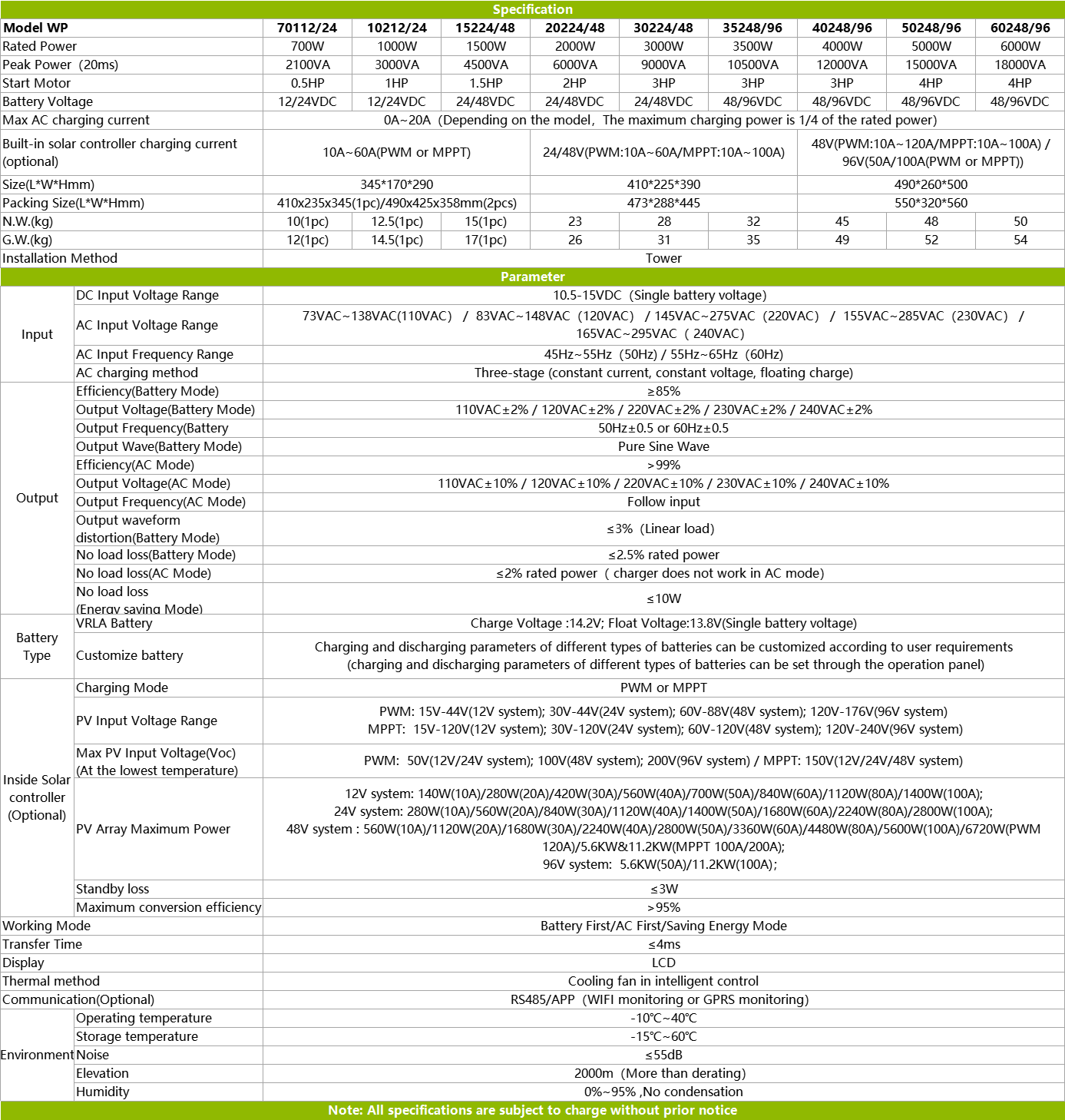
# Why Choose Us?

▷R&D Ability
Xindun have 20+ senior engineer and is at the top of the industry.ISO 9001:2015,ISO 14001:2015,10+ Software Copyright,20+ Patent Certificates, 50+ Honorary Certificates.
▷OEM/ODM
We can provide customized services: logo, machine appearance,special voltage and power, etc. The products you see on other website which is same with us, they are all from Xindun Power.
▷Warranty
The warranty of Xindun products is 2~3 years(Industry-wide warranty is 1 year).
▷After-Sales Service
Xindun's product failure rate is within 5%, which is far lower than the average in the industry. We promise to solve the after-sales problems within 48 hours.We have cooperated with many customers for more than 10 years,without perfect after-sales service, they cannot always choose xindun!
# About Xindun Power

Guangdong Xindun Power Technology Co.,Ltd-Takes innovation as the core, grasps the leading photovoltaic power generation technology, and joins the advanced industrial Internet of things and big data technology to realize the successful application of cloud computing in the field of energy management. In the industry for more than 15 years of outstanding performance, let us become a strong influence in the field of companies.
★Factory Location-Foshan,Guangdong,China
★Main Market-Africa, Middle East, Asia & South America. (Ukraine, Russia, Vietnam, Pakistan, Nigeria, Kenya, South Afriac, Ghana, Thailand,Philippines, etc.)
★Factory-7000+Square Meters, 100+ workers
★Product Range-solar inverter,3 phase inverter,hybrid inverter,UPS,solar charge controller,solar power system,mini solar dc system
★Department-R&D, Production, Sales, Marketing, Purchasing, QA, After-sale service department
★Certificate-ISO 14001:2015, CE, IEC, TUV etc.
★Patent-Software Paten, Design Patent, Project Pantent
# Qualifications and Certificates

# Factory Workshop

We have nearly 8,000 square meters of standard solar inverter production factory, advanced R&D testing capabilities and hybrid solar inverter production equipment.Strict quality inspection and manufacturing process control.

# Our Respected Global Customers

# Frequently Asked Questions
Q1:What are the characteristics of the best low frequency inverter?
A1:The iron loss of the best low frequency inverter is basically unchanged when operating at full load and light load, so the no-load loss of the best low frequency inverter is relatively large when operating at light load. Moreover, the best low frequency inverter has better load capacity, especially the impact load capacity, than the high-frequency inverter, and can suppress the higher harmonic components in the waveform.
Q2:Why we choose the best low frequency inverter?
A2:The best low frequency inverter has the advantages of simple circuit, easy adjustment, strong overload resistance, low cost and practicality, and is popular in the market.
Q3:Which is better, low frequency inverter 24v or low frequency inverter 48v?
A3:The selection shall be based on the voltage, battery capacity, electrical power and other conditions of the product. The power and time of the low frequency inverter operation depends on the ampere-hour of the battery. The low frequency inverter 24V to 110V/220V is generally used for medium and small power inverters, and the load power is recommended to be 500w-3000w; The low frequency inverter 48V to 110V/220V is generally used for high-power inverters, and the load power is recommended to be 2000w-6000w.
Q4:Are we the factory and manufacturer of the best low frequency inverter?
A4:Yes, Xindun Power has more than 16 years of experience in the production and design of the best low frequency inverter. We have professional inverter engineers to provide configuration and installation services and after-sales maintenance and other technical services.
Q5:What are our inverter sales markets?
A5:The inverters and solar energy systems of Xindun Power have been sold to more than 60 countries and regions around the world. The main markets are: Africa, the Middle East, Asia, South America, etc.



